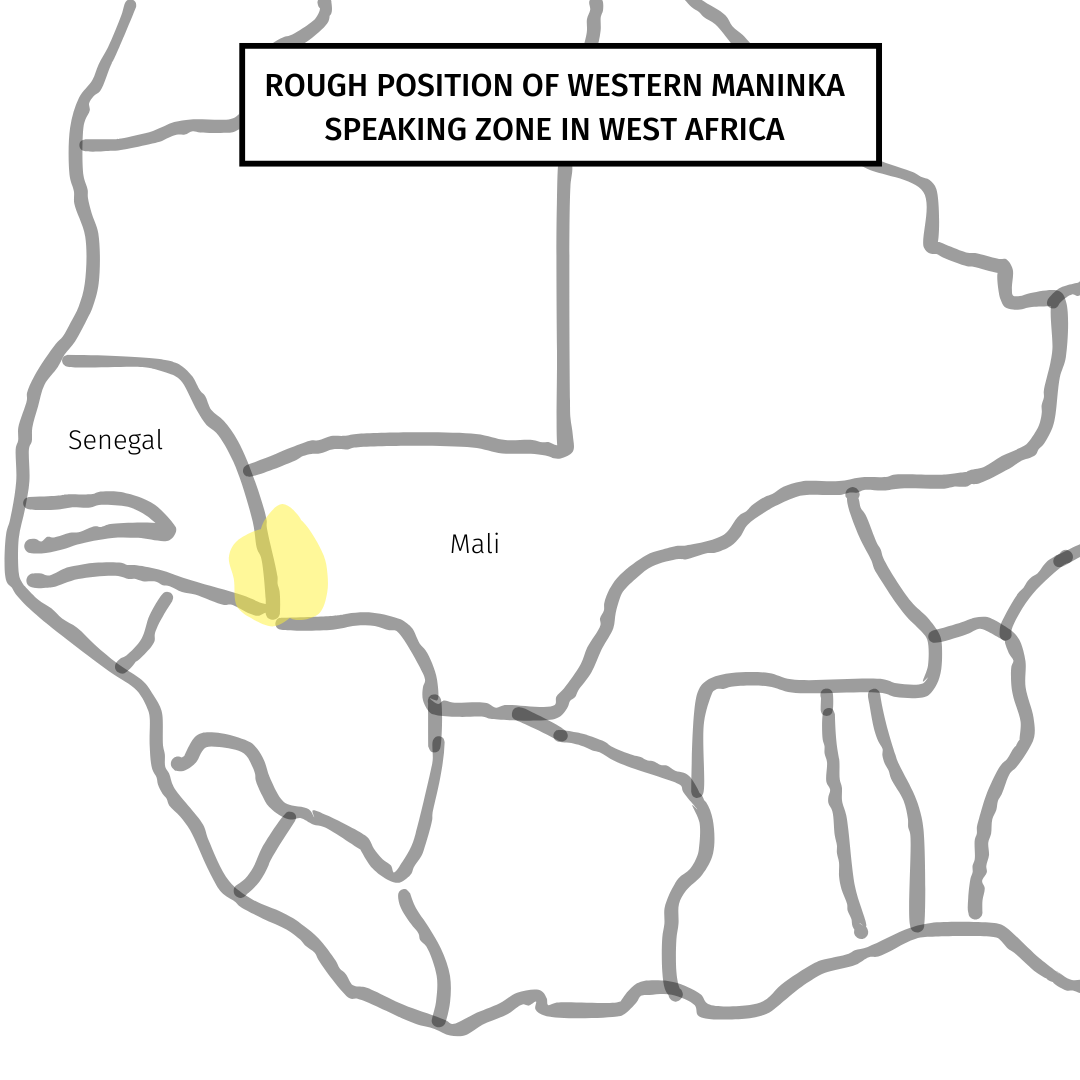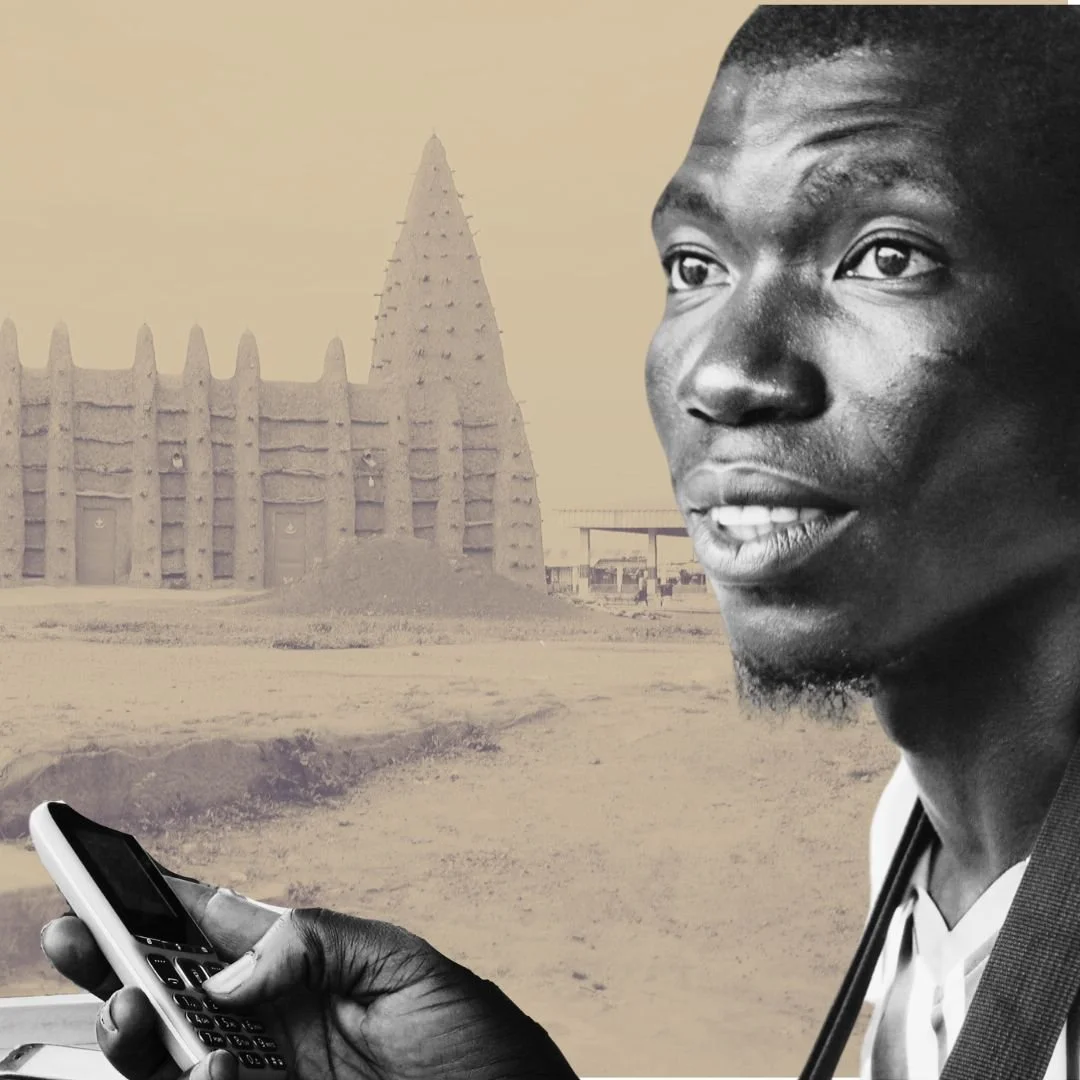This is a write-up and reference page for people interested in learning Western Maninka varieties as spoken primarily in eastern Senegal and western Mali.
Western Maninka, a Manding Variety
Western Maninka is a Manding language variety (or collection of varieties) often referred to in English and French under various names such as "Maninka", "Malinke", "Mandingo". It generally can be applied to varieties sometimes called "Kassonke" or "Khassonké" as as well. In some cases, Jahanka is also thrown into the broader category of Western Maninka.
For simplicity's sake, I will use the term Western Maninka here. This usefully sets it apart from the Maninka spoken primarily in Guinea, which is sometimes referred to as "Eastern Maninka" in an explicit effort to distinguish it from Western Maninka. Otherwise, it's often just called Maninka.
In the language itself, there is no named distinction between Western and Eastern Maninka. Both are referred to using related forms: maninkakan and maniŋkakaŋo which both boil down to literally meaning "language of the people of Manden".
Western and Eastern Maninka are often held by native speakers to be mutually intelligible. That said, they present a number of distinct features. Most notably, Western Maninka varieties have only 5 vowels, whereas Eastern Maninka varieties have 7 vowels. In this sense, Western Maninka is a "Western" variety of Manding (like Senegambian Mandinka) and Eastern Maninka is an "Eastern" variety of Manding (like Bambara and Jula as spoke in Mali, Burkina Faso and Côte d'Ivoire). This can be represented as follows:
Manding
Eastern Manding [7 vowels]
Bambara
Jula
(Eastern) Maninka
Western Manding [5 vowels]
(Western) Maninka
Mandinka
In short, Western Maninka is unique because it lies at the fault line of Eastern and Western Manding varieties. Its grammar is often close to Eastern varieties like Eastern Maninka, Bambara and Jula. But its phonology (sound system) and certain grammatical features are shared with the Western varieties like Mandinka.
[NOTE: The Maninka in and around the midwestern Malian town of Kita is a 5-vowel variety, but is quite different from the Western Maninka of Senegal (around Kédugou) and Mali (around Kayes and Kiniéba). I do not discuss it in this write-up. The major reference for this variety is Denis Creissels’s linguistic grammar “Malinké de Kita” (2009) published by Rüdiger Köppe Verlag.]
Resources Specifically for Western Maninka
“Malinke Introductory Book: Learner’s Guide”: A 122-page manual produced by Diatrou Dembelé of Peace Corps Mali for its volunteers serving in Western Mali.
“Le Maninka Du Niokolo”: A linguistic grammar sketch in French by Dennis Creissels. It covers phonology, morphology and syntax. Also includes a lexicon and some glossed texts. Written by an academic linguist for academic linguists, so it’s not the best option for the casual learner. The work is also focused specifically on the Maninka spoken in/around the Niokolo region near Kédougou in Senegal. The author specifically flags this variety of Maninka as being distinct from both Senegambian Mandinka and other Western Maninka varieties spoken in Mali.
Works of Gérard Meyer: The missionary Gérard Meyer who worked in Senegal collected a number of works of oral literature in Western Maninka of Niokolo. The following are bilingual (Maninka - French):
Resources for Eastern Maninka (which can also help)
Here are some other resources from me and An ka taa that are specifically focused on Maninka (as spoken in Guinea).
Online Courses
Beginner Maninka — A full online course for beginners with video lessons, written texts, interactive exercises, audio flashcards, speaking activities, etc.
Videos
Maninka Lessons Playlist on YouTube — A series of lessons in English that teach the basics of Maninka (AKA “Malinke”).
Resources for Mandinka (which can also help)
Here are some resources for Mandinka (as spoken in the Gambia and Senegal primarily).
Resources for Learning Mandinka — A blog write-up with a series of links to various PDFs, websites, social media accounts, etc.





What do Ivoirians in the streets have to say about social media?